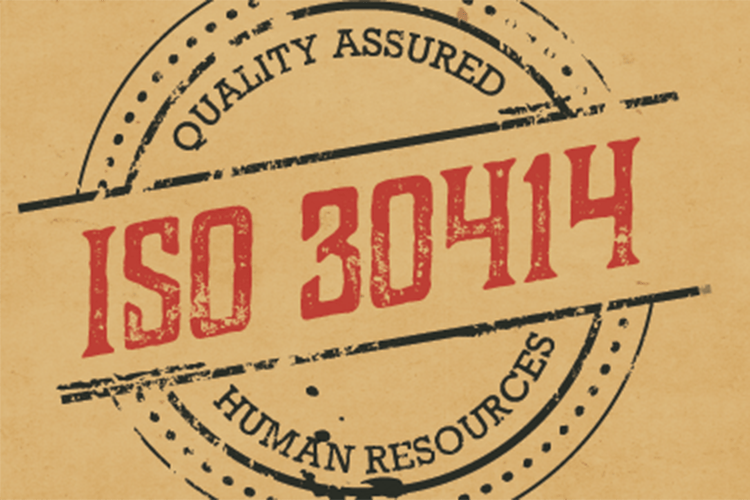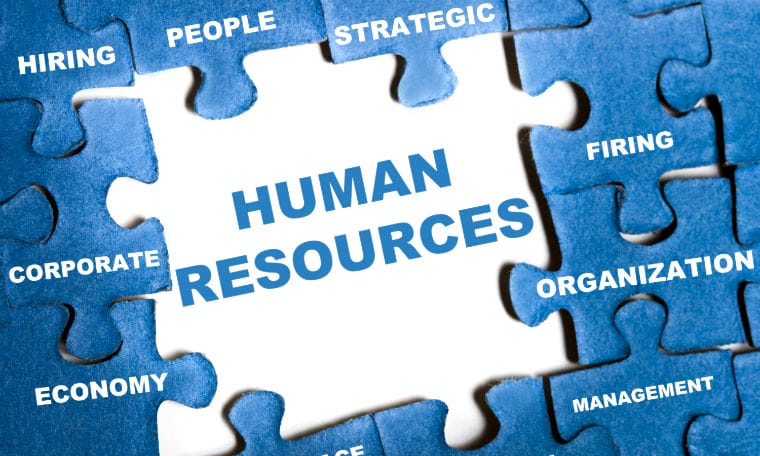With the 2024 SHRM Annual Conference & Expo right around the corner, HR folks everywhere are understandably beefing up their itineraries for a four-day stay in Chicago, the host city.
As fate would have it, our team at Workforce.com is headquartered in the Windy City. As locals, we feel obligated to share our insider information on the best restaurants to hit while visiting the city. Of course, as any true local would know, we can’t share the closest guarded spots with you. But this is still a pretty thorough guide, so don’t worry.
Here is our list of must-tries categorized by neighborhoods from several local, self-proclaimed foodies in our office:
LEGEND:
C = Casual
B = Breakfast
L/D = Lunch/Dinner
D = Dessert
Restaurants
-
Lakeview
- C B Ann Sathers – Iconic breakfast spot that serves some of the best cinnamon rolls you’ve ever had. Get the eggs benedict and some rolls to go.
- C L/D Will’s Northwoods Inn – Lively casual sports bar with neighborhood vibes. Don’t miss the chicken ceasar chicken wraps, cheese curds, and onion rings.
- L/D Dear Margaret – A very cozy, classic french restaurant, perfect for smaller groups and couples. Start off with the charcuterie, a glass of wine, and the duck bolognese for an entree.
-
Lincoln Park
- C L/D Old Pueblo Cantina – Mexican joint with great tacos and even better margaritas.
- C L/D Pequod’s Pizza – Iconic pizza that serves what’s arguably the best Chicago deep-dish style pizza in town.
- D Annette’s Italian Ice – Window-service ice cream and frozen yogurt shop that specializes in their Italian ice. Known for their fruit flavors like lemon, blood orange, and passion fruit, don’t forget to bring cash!
-
Logan Square
- L/D Cellar Door Provisions – A chill, laid back wine bar whose menu landed it a spot on the Michelin Guide. Please for the love of God, don’t miss out on the burger. One of my favorites in the city.
- B D Sugar Moon – A bakery adored with an overwhelming amount of goods, each one of them more delicious and creative than the next. Don’t skip out on their jalapeno-cheddar scones or their tahini chocolate chip cookie.
- B L/D Lula Cafe – New american food served in a very old school manner. For breakfast, get the french toast, the breakfast burrito, and/or the tofu and vegetable scramble. For dinner, the pasta Yiayia, fried mushrooms, and sweet and sour onion focaccia are standouts.
-
Palmer Square / Bucktown
- C B Allez Cafe – If you’re looking for one of the best breakfast sandwiches in Chicago, look no further than Allez Cafe. My suggestion: one breakfast sandwich with a cream top coffee. Thank me later.
- D Margie’s Candies – Over 100 years old, this ice cream shop is something to behold. I could drink the hot fudge from their infamous sundaes with a straw…
- L/D Giant – This is the place you bring someone to when you’re really trying to impress them. Their ever changing menu makes it hard to recommend specific menu items, however you truly can’t go wrong.
-
West Town
- C L/D Mott St – Asian fusion with a great outdoor space and an even better burger (only served prior to 7 pm!)
- L/D Kai Zan – Amazing, fresh, quality sushi served at a reasonable price. If you’re feeling up for it, their 10+ course omakase menu for $90 has yet to be beat.
- L/D Lao Peng You – Featured in The Bear, this chinese spot has some of the best dumplings and noodles in the city. With no reservations, I’d recommend going for lunch if possible.
-
Old Town
- C L/D Ranalli’s – Sports bar that caters to huge groups, great outdoor space, and even better food. You cannot leave without having the hot honey soppressata pizza. Also, a special shout out to their chicken fingers… best I’ve ever had.
- L/D Topo Gigio Ristorante – When you think of an old school Italian spot, this is it. The perfect order: an espresso martini, the calamari, Conchiglie Alla Sarda pasta, and tiramisu to finish. You might not sleep but it’ll be worth it, I promise.
- C B Nookies on Wells – An adorable breakfast spot notable for their french toast, crepes (sweet or savory), and eggs benedict.
-
Gold Coast
- L/D Gibson’s – A classic white table-cloth all-American steakhouse. Known for their surf & turf and their absolutely massive desserts – the carrot cake slice is something to behold.
- L/D 3 Arts Club Cafe at RH Chicago – One of the most beautiful restaurants is in the historic landmark where Restoration Hardware resides. Their lobster roll is a 10 out of 10.
- C B The Original Pancake House – A breakfast chain that has a place near and dear to my heart. I’ve been getting their 49er pancakes with a side of extra crispy bacon for the past 20 years and I don’t plan on stopping anytime soon.
-
River North
- C B Doma Cafe – Small, european-influenced breakfast spot known for their hash browns, cevapi, olive oil cake, and burek.
- L/D Lil’ Ba-Ba-Reeba! – Spanish tapas perfect for big groups. Must-haves: the dates, the brussel sprout salad, and the patatas bravas.
- L/D Bavette’s Bar & Boeuf – My favorite restaurant in the city, hands down. Albeit, a more pricey option, but offers immaculate vibes, top-notch service, a french dip that will knock your socks off, a wedge salad worth crying over, and an ice cream sundae that I dream about. Can’t get a reservation, try their sister restaurant just next door: Gilt Bar.
-
West Loop
- C L/D Green Street Smoked Meats – Open concept BBQ hidden in an alleyway offering some of the best BBQ Chicago (& beyond) has to offer.
- L/D Duck Duck Goat – From Top-Chef and Chicago icon, Stephanie Izard’s take on Chinese fusion is done beautifully here. Please get the goat slap noodles, xiao long bao, braised short ribs, and the duck fried rice. Oh and save room for the seasonal soft serve ice cream.
- L/D Au Cheval – All I have to say is they are known for their burger for good reason. Be sure to get it with their bacon.
-
Greektown
- C L/D Greek Islands – Arguably the best Greek restaurant in Greektown, this place lives up to its name. Keep it classic with some saganaki, moussaka, and grape leaves.
- D B Lou Mitchell’s – Opened in 1923, this old school diner is perfect for the classics: silver dollar pancakes, waffles, a Denver omelet (hobo style), and a side of raisin toast.
- L/D Monteverde – One of Chicago’s most popular Italian restaurants. Hard to get a reservation with their handmade pasta and amazing appetizers. If you are able to snag a spot, start with the Burrata E Ham, any of their pastas for your main will most definitely suffice, and end with the butterscotch dessert or the tiramisu.
-
The Loop
- L/D Cindy’s Rooftop – This rooftop restaurant and bar has incredible views of the lake and Grant Park. I recommend going for happy hour and grabbing a drink or two with a couple starters.
- C B L/D Revival Food Hall – This place caters to everyone and anyone. A huge food hall that truly has the best of the best. From their on-site cafe for your coffee, to artisan sandwiches at Danke, fresh poke from Aloha Poke, health-focused bowls from Fare, and so much more. Definitely worth just checking out if you’re in the area.
- C B L/D The Exchange – This place is pretty unassuming on the outside, but once you’re sat inside their atrium, you’ll understand why I strongly recommend this place. I encourage going for lunch and grabbing their turkey club sandwich with a side of fries.
-
South Loop
- C L/D Nepal House – Authentic Nepalese Indian food can be found here. Keep it simple with their garlic naan, chicken makhani, and Momo’s.
- L/D Bistro Monadnock – This french bistro is located in the historic Monadnock building. I strongly suggest grabbing a french onion soup to start as well as their croque madame for an early lunch.
- C B Eleven City Diner – Another iconic Chicago diner serving up some old-school Jewish favorites. Think matzo ball soup, pastrami on rye, and a brisket sandwich on brioche-like Challah. Beyond good.
-
Bridgeport
- D Runaway Cow – Newly opened vegan ice cream spot that serves oat-based soft-serve. I swear non-vegans won’t be able to tell the difference. It’s that delicious. Get a snowstorm; their take on a Dairy Queen Blizzard.
- C L/D Kimski – This casual korean-polish fusion sounds like it might not work, but I promise it does. Don’t believe me? Get their Maria’s Standard and report back to me.
- C L/D The Duck Inn – Worth it simply for their outdoor space. I’d sit outside and order the duck for two, prawns, and the mushrooms and polenta.
-
Chinatown
- C L/D QXY Dumplings – This place is worth the wait. Put your name down, walk around Chinatown, and be prepared to feast on some unreal soup dumplings. Specifically the pork and cabbage, beef and onion, and the lamb and coriander. I also recommend getting a side of kimchi, wood ear mushrooms, and cucumber salad.
- C L/D Go 4 Food – This casual Chinese seafood spot has been awarded a Michelin star for good reason. Be sure to get the bao taco, the walnut shrimp, and of course, the dungeness crab.
- D Chiu Quon Bakery – A classic Chinese bakery that almost always has a line. Known for their pork buns, Portuguese egg tarts, sesame balls, and so, so much more. Be sure to bring cash with you!
-
Bronzeville
- D Shawn Michelle’s Ice Cream Shop – One of our claims-to-fame when it comes to ice cream. The honey cinnamon ice cream and the banana pudding are incredible. But truly… you can’t go wrong with any of their flavors.
- C L/D Cleo’s Southern Cuisine – This creole spot is known for having some of the best chicken wings Chicago has to offer. Order the sauced six with the mac & cheese. You won’t regret it.
- L/D Bronzeville Winery – Whether or not you’re partaking in their wine list or cocktails, be sure to get the sweet potato ribbons, brussel sprouts, and watermelon steak (I know, just trust me).
Bars
There’s nothing better than a productive day at the SHRM conference; connecting with others in HR, checking out the latest in tech, and learning from some knowledgeable speakers. But the best part? Rounding it all out with a drink at a beautiful cocktail lounge, beer garden, or a rooftop bar. Here is a list of great spots to grab a drink near the McCormick Center for your next team happy hour or solo nightcap:
- Moody Tongue Brewery
- M Lounge
- Best Bar
- 16th Street Bar & Coffee Lounge
- Skylark
- Mitchell’s Tap
- Turtle’s Bar & Grill
- VU Rooftop Bar
- Reggies Chicago
- Spoke and Bird









 Which begs the question: Will those with criminal convictions in their background care about the political leanings of the owners if they get a job at Koch Industries?
Which begs the question: Will those with criminal convictions in their background care about the political leanings of the owners if they get a job at Koch Industries?








